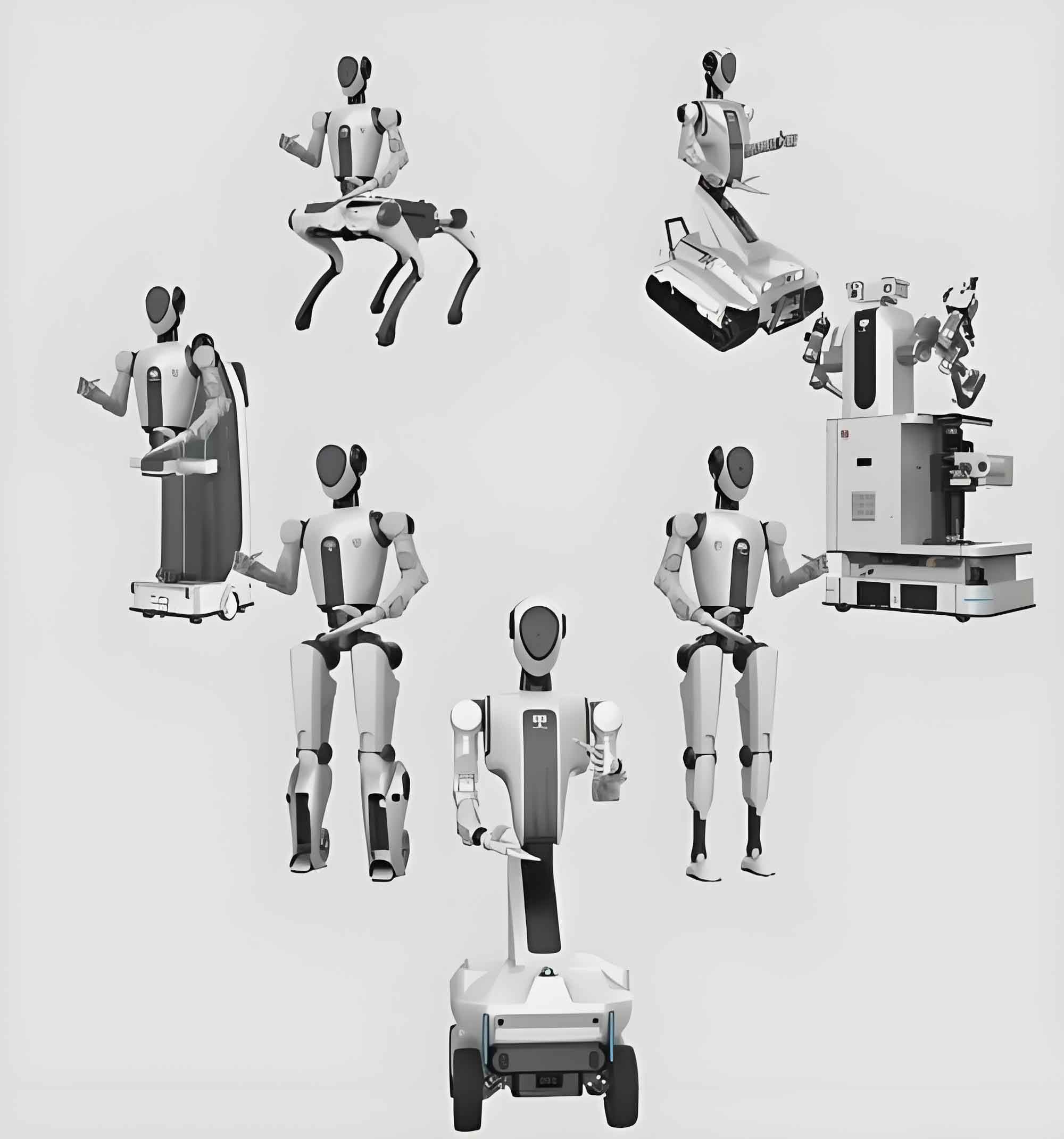GUANGDONG – The futuristic vision of “robots manufacturing robots” has materialized in a Guangdong production line, where collaborative AI robots operate with round-the-clock precision, assembling a new industrial robot every 30 minutes on average.

1. Technology Control and Ecosystem Empowerment
At Midea KUKA Intelligent Manufacturing Park in Shunde, over a dozen orange AI robots perform specialized tasks – screw driving, welding, and component assembly – while AGVs shuttle materials through the fully automated facility. This AI robot production line focuses on manufacturing robots under 100kg capacity.
Chen Feng, KUKA China Operations and HR Director, explained: “Depending on market demand, we can adjust production cycles. Technologically, we’re capable of reducing single-unit assembly time to under one minute.” The foundation lies in KUKA’s heritage as one of the global “Big Four” industrial robotics firms, now enhanced by Midea’s integration of Chinese and overseas R&D teams. Currently, over 85% of core robot components – including motors, controllers, and body castings – are domestically sourced, with only large RV reducers awaiting full localization. “Our goal is 100% self-sufficiency,” Chen emphasized.
The ecosystem surrounding the park accelerates this vision. Since 2019, KUKA has relocated 85% of its premium suppliers to the vicinity, enabling procurement of critical parts within 10 minutes. “Motors are produced just 100 meters away,” noted Chen. This clustering strategy supports Guangdong’s dominance in industrial robotics, producing 246,800 units (44% of China’s total) in 2024.
Fang Hongbo, Chairman of Midea Group, highlighted their “technology-industry-ecosystem” integration: “As the robotics chain leader in Guangdong, we promote cluster development through a ‘chain leader + specialized SMEs’ model.” Midea’s portfolio – spanning KUKA, Swisslog, and Hiwin – now covers components to full systems, positioning it among the world’s top four industrial AI robot manufacturers.
2. Localization and Diversified Development
Localization remains central to KUKA’s strategy since Midea’s 2017 acquisition of the German firm for ¥29.2 billion. Production capacity has doubled from 11,000-14,000 units in 2016 to approximately 30,000 annually at the Shunde facility, achieved without workforce expansion. This transformation includes boosting domestic revenue share from under 10% to 25% of KUKA’s global sales, which surpassed ¥30 billion in 2024.
The milestones accelerated in 2023: Guangdong’s first “robot-producing-robot” line launched in January, followed by Phase II of the park in May, targeting annual output of 80,000-100,000 AI robots. “This is now China’s largest industrial robotics production base, having delivered over 80,000 units,” stated Fang Hongbo.
Diversification complements localization. While the Shunde hub focuses on manufacturing, KUKA’s Kunshan facility handles logistics automation solutions. Demand surges from electric vehicle expansion, battery sector recovery, and 3C electronics automation have driven recent growth. “January orders increased substantially, with Q1 expecting significant expansion,” Chen observed. Applications now cover automotive, lithium batteries, photovoltaics, aerospace, and medical fields, with AI robot pricing ranging from tens to hundreds of thousands of yuan.
3. Integration of AI and Robots: Boundless Prospects
AI permeates 12 of the 13 production stages (excluding painting), with precision tasks showcasing the synergy. “Reducer installation demands micron-level accuracy,” Chen detailed. “Our AI robots use vision systems and automatic programming for flawless assembly, surpassing manual precision.” This AI robot integration boosts single-shift productivity by 50% and time efficiency by over 30%.
Collaborations with NVIDIA, DeepSeek, and Mech-Mind aim to deepen this convergence. “We’re building an AI platform trained on KUKA’s operational data to control robots via advanced algorithms,” Chen revealed. Future “AI + robot” ecosystems could enable one-click debugging, networked monitoring, and predictive maintenance – slashing operational costs by pre-shipping components before failures occur.
Humanoid robots represent another frontier. While KUKA China has initiated technical preparations leveraging shared components like motors and reducers, Chen acknowledged unresolved engineering challenges. Fang Hongbo concluded: “We’ll develop robots tailored for China, combining KUKA’s technology with local scale and efficiency advantages. Our mission is enabling broader, smarter AI robot adoption across industries.”
